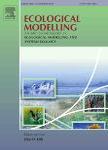版权所有:内蒙古大学图书馆 技术提供:维普资讯• 智图
内蒙古自治区呼和浩特市赛罕区大学西街235号 邮编: 010021

作者机构:South Australian Res & Dev Inst West Beach SA 5024 Australia Dept Environm Water & Nat Resources Adelaide SA 5001 Australia Flinders Univ S Australia Sch Biol Sci Adelaide SA 5001 Australia CSIRO Marine Res Hobart Tas 7001 Australia Univ Adelaide Sch Earth & Environm Sci Adelaide SA 5005 Australia Deakin Univ Warrnambool Vic 3280 Australia Univ S Australia Mawson Lakes SA 5095 Australia
出 版 物:《ECOLOGICAL MODELLING》 (生态模拟)
年 卷 期:2013年第255卷
页 面:38-57页
核心收录:
学科分类:0710[理学-生物学] 07[理学] 09[农学] 0713[理学-生态学]
基 金:Fisheries Research and Development Corporation (FRDC) [2003/072 2005/031]
主 题:Eastern Great Australian Bight Food web model Ecopath with Ecosim Sardine Sardinops sagax Fishing impacts
摘 要:We used the Ecopath with Ecosim software to develop a trophic mass-balance model of the eastern Great Australian Bight ecosystem, off southern Australia. Results provide an ecosystem perspective of Australia s largest fishery, the South Australian sardine fishery, by placing its establishment and growth in the context of other dynamic changes in the ecosystem, including: the development of other fisheries;changing abundances of apex predator populations and oceanographic change. We investigated the potential impacts of the sardine fishery on high tropic level predators, particularly land-breeding seals and seabirds which may be suitable ecological performance indicators of ecosystem health. Results indicate that despite the rapid growth of the sardine fishery since 1991, there has likely been a negligible fishery impact on other modelled groups, suggesting that current levels of fishing effort are not impacting negatively on the broader ecosystem structure and function in the eastern Great Australian Bight. Results highlight the importance of small pelagic fish to higher trophic levels, the trophic changes that have resulted from loss and recovery of apex predator populations, and the potential pivotal role of cephalopod biomass in regulating bottom-up trophic processes. The ability to resolve and attribute potential impacts from multiple fisheries, other human impacts and ecological change in this poorly understood region is highlighted by the study, and will be critical to ensure future ecologically sustainable development within the region. Crown Copyright (C) 2013 Published by Elsevier B.V. All rights reserved.